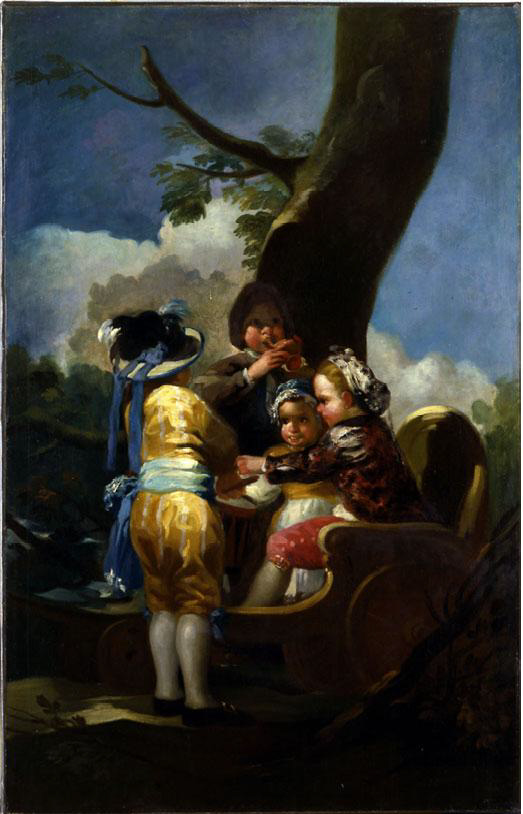Unfortunately, art-related mishaps do happen from time to time. Because art is so highly valued, it is often a desired bounty for criminals that steal expensive pieces to resell them at illegal auctions. Besides, artwork can be extremely fragile and get ruined easily without proper care. When the question of art transportation arises, things become even more complicated. When in transit, vulnerable items become more prone to damage. Throughout history, the world has witnessed many cases of artwork shipping going wrong. Here are three notable instances of art getting stolen, lost, or ruined during transportation.
Famous Artwork Shipping Disasters You Should Know About
Francisco de Goya’s Children with a Cart
This painting depicting four children playing with a cart (featured image) was lost in 2006 while being shipped to the Solomon R. Guggenheim Museum. It was supposed to travel from Ohio to New York but was stolen as the artwork shipping truck was approaching Pennsylvania. Francisco de Goya’s painting is worth $1m and was expected to be part of an exhibition alongside other paintings by internationally famous artists such as Picasso and El Greco. Fortunately, the artwork’s whereabouts were soon discovered. To this day, not much is known about who was involved in the theft of the painting.
Gustave Courbet’s The Stonebreakers
In 1945, Gustave Courbert’s painting titled The Stonebreakers was meant to leave Dresden, Germany, and join the rest of the art pieces that had already been transported to the safety of the countryside storage. During the last days of World War II, the city was attacked and a lot of museums were looted. The Stonebreakers were among the many pieces that got caught up in the fire and were lost forever.
Lucian Freud’s Untitled Oil Painting
Artwork shipping mistakes can occur even when expert art handlers are involved. The unfortunate incident occurred in 2000 when artwork by one of the most renowned artists of the 20th century, Lucian Freud, was acquired by a collector for £3.5m at Sotheby's auction. In a terrible turn of events, the crate with the painting was mistaken for empty packaging and disposed of by the workers at an art handling company responsible for its transportation.
While these stories might sound unsettling, it is important to remember that they do not happen too often. Moreover, there are ways to prevent something like that from happening again. Working with a trustworthy fine art shipping company that pays much attention to the safety of art in transit is a guarantee of a great result.
